NEVER GET DISCOURAGED
Great to be a new member of the Stiletto Gang, the most talented writers I’ve come across in a group, probably ever. As an introduction, I’ll lay out the highlights of my literary journey below.
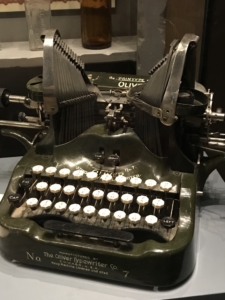 In 1962, my mother registered me for a writing class that was offered in summer school after the eighth grade. Only one other girl signed up, so the class was cancelled.
In 1962, my mother registered me for a writing class that was offered in summer school after the eighth grade. Only one other girl signed up, so the class was cancelled.
Once in high school, we were assigned a short story. I wasn’t present the day the teacher handed them back—I’d gone to the orthodontist—but when I returned to school, kids congratulated me on my story, saying the teacher read it to the class. The next day when she returned my story, I found she’d give it a B-.
My parents told me I couldn’t be a writer because I wouldn’t be able to make a living. I don’t know whether that is what would have happened. You never know what the future holds. But, I was an obedient child, at least for a while, so I said ok.
I didn’t know what else I might want to do. Dad wanted my sister and me to be teachers, so if our husbands died or abandoned us, we’d be able to support ourselves. My sister did and ended up as an administrator in a small public school district. Me? I dropped in and out of five colleges/universities until I was finally awarded a B.S. degree in Criminal Justice.
I once signed up, as an adult, for a writing class at the community college in our town, excited to finally get something going. When I received my first story back, the instructor had written that I had no talent—give it up.

After I began practicing law, I was lying around my living room once night and told my husband that if a writer could make $5,000 a pop for genre romance novels as it stated in the TV Guide article I read, I should try that. I read everything, including romances. I didn’t think it looked that hard. So, I bought some books on writing romances and sent for tip sheets and finally wrote one. I sent it off and waited for a response. The editor said no, she wouldn’t publish my novel, her rejection including some choice insults, and never to send her anything again.
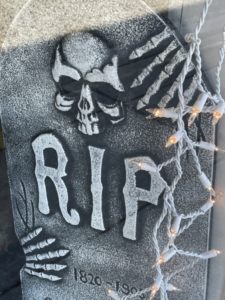 I began writing suspense/mysteries in the 80s. My father was a criminal defense lawyer, (and later a judge), so I’d been around the law since I was little. I had been a probation officer and was at that time a criminal and family lawyer. Crime, I knew about. By the way, I heard that not long after the aforementioned editor rejected my novel, she died. Just so you know, I didn’t kill her.
I began writing suspense/mysteries in the 80s. My father was a criminal defense lawyer, (and later a judge), so I’d been around the law since I was little. I had been a probation officer and was at that time a criminal and family lawyer. Crime, I knew about. By the way, I heard that not long after the aforementioned editor rejected my novel, she died. Just so you know, I didn’t kill her.
When my editor at St. Martin’s Press, Inc. called me about MY FIRST MURDER, (my first published novel) he excitedly asked where I learned to write like that. He loved the book and said my manuscript was one of the best submissions he’d ever seen in terms of preparation, punctuation, etc. He loved it so much, a year later he rejected the sequel.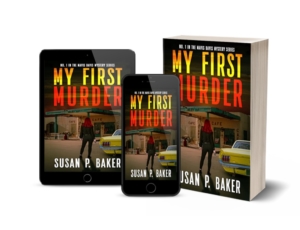
Enough of that. My point is, never give up. I had that first novel sale in 1988. I used the book as a political tool when I was running for office, donating copies across the county. What a great gimmick! I received free publicity and extra attention at every event, in addition to speaking engagements.
I was elected to the bench and took office on 1/1/91. My focus turned to being a sitting judge, modernizing practices and procedures in that court, including starting programs to help families and children. I continued to write whenever I could, though I didn’t have any other books published until after I left the bench at the end of 2002. In 2004, Eakin Press (a Texas publisher) released my nonfiction books: Heart of Divorce (which I wrote to help pro se litigants who couldn’t afford lawyers to prosecute their own divorces) and Murdered Judges of the 20th Century, which I researched and wrote over the previous six years, (and which began as evidence for the county commissioners that we needed courthouse security).
After that, I started submitting works I’d written while on the bench. I wanted to change my focus from the law to liberal arts. In 2015, I made the decision to self-publish. Though by then I had several mystery/suspense novels under my belt, I had grown tired of the traditional publishing process. I was aging out. The last straw was when an agent told me to cut my manuscript 20,000 words and submit it to her. I did, and never heard from her. That was it.
At sixty-five years of age, I was sick of the abuse most authors suffer at the hands of agents and editors. I was writing because I have to, not because I needed to. Or, as I often phrase it, I can’t not write. There was no joy, no pleasure in experiencing what they were dishing out. Where I had hoped for years to have the guidance and support of an agent and/or editor, I realized that would never happen. I have stories to tell. I’m constantly learning craft. I don’t care if I ever have huge sales. I’m having fun doing what I’ve wanted to do since I was a little girl with no pressure, no insults, no rejection. I love it.
Now, at 74, I spend a lot of my days writing or reading. I’m having fun living life my way. I never gave up. I suggest if you love to write, don’t let anyone discourage you either.

Susan has published 14 books in the last 30 or so years. Not all of them are mystery/suspense, but all of them have something to do with the law.





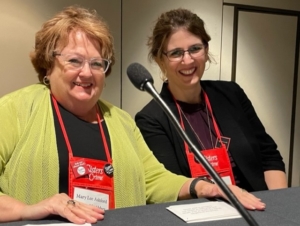
 By Lois Winston
By Lois Winston

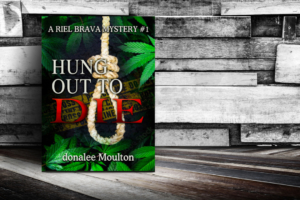

 Beginning of the Year and I’m Already Tired by Debra H. Goldstein
Beginning of the Year and I’m Already Tired by Debra H. Goldstein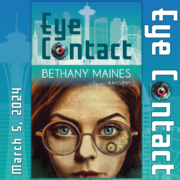
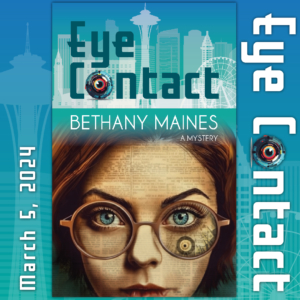 However, since I haven’t had time to figure out what my pen names would be I guess I’ll just forge ahead with the name I’ve got and announce that I have a new mystery coming out! Eye Contact is a stand-alone, laugh-out-loud mystery set in Seattle. With a quirky cast of characters, including a ten-year-old big time wrestling fan, a few science nerds, and a couple of Chinese spies who REALLY dislike working with a guy who thinks he knows it all, this one should tickle a few funny bones.
However, since I haven’t had time to figure out what my pen names would be I guess I’ll just forge ahead with the name I’ve got and announce that I have a new mystery coming out! Eye Contact is a stand-alone, laugh-out-loud mystery set in Seattle. With a quirky cast of characters, including a ten-year-old big time wrestling fan, a few science nerds, and a couple of Chinese spies who REALLY dislike working with a guy who thinks he knows it all, this one should tickle a few funny bones. Bethany Maines is the award-winning author of action-adventure and fantasy tales that focus on women who know when to apply lipstick and when to apply a foot to someone’s hind end. She participates in many activities including swearing, karate, art, and yelling at the news. She can usually be found chasing after her daughter, or glued to the computer working on her next novel (or screenplay). You can also catch up with her on
Bethany Maines is the award-winning author of action-adventure and fantasy tales that focus on women who know when to apply lipstick and when to apply a foot to someone’s hind end. She participates in many activities including swearing, karate, art, and yelling at the news. She can usually be found chasing after her daughter, or glued to the computer working on her next novel (or screenplay). You can also catch up with her on 
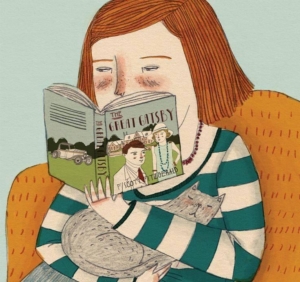 As a lifelong book lover, I read newsletters and articles by literary critics on what they think is important to read. So in January, I usually check the various “Best” book lists for the past year.
As a lifelong book lover, I read newsletters and articles by literary critics on what they think is important to read. So in January, I usually check the various “Best” book lists for the past year. Reader’s Digest doesn’t stop at mere books of the year. It also publishes “The 100 Best Books of All Time.” What they do when new books are published is a mystery. They could easily drop Hamlet from the current list. It’s a remarkable piece of literature, but it isn’t a book. But what about the other 99?
Reader’s Digest doesn’t stop at mere books of the year. It also publishes “The 100 Best Books of All Time.” What they do when new books are published is a mystery. They could easily drop Hamlet from the current list. It’s a remarkable piece of literature, but it isn’t a book. But what about the other 99?
 Dear Readers: I’m slowly but surely recovering from 2023! So much progress. I’m still grieving, but my mother’s estate is settled and I can see the floor to my office. I realized it was my day to blog on The Stiletto Gang so I pulled up an article I wrote in 2016. Funny, the position I took back then is the same position I hold today. After reading, please tell me what you think. Do you avoid prologues, and how much time do you devote to marketing? ~ Donnell
Dear Readers: I’m slowly but surely recovering from 2023! So much progress. I’m still grieving, but my mother’s estate is settled and I can see the floor to my office. I realized it was my day to blog on The Stiletto Gang so I pulled up an article I wrote in 2016. Funny, the position I took back then is the same position I hold today. After reading, please tell me what you think. Do you avoid prologues, and how much time do you devote to marketing? ~ Donnell 

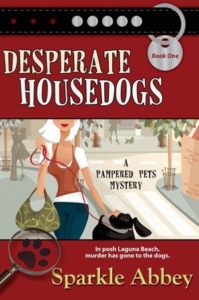
 By Lois Winston
By Lois Winston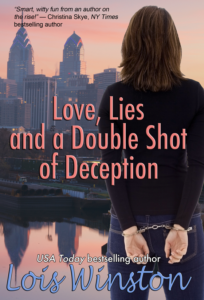 Years ago, I knew a woman who went to great lengths to project the ideal marriage. She constantly bragged about how much her husband loved her and what a perfect marriage they had. Then I learned the secrets behind the lies. She was carrying on an affair that her husband discovered when he tapped his own phone. Mr. and Mrs. Perfect Marriage were anything but. Although Love, Lies and a Double Shot of Deception isn’t about that marriage, it got me thinking about public persona versus private reality.
Years ago, I knew a woman who went to great lengths to project the ideal marriage. She constantly bragged about how much her husband loved her and what a perfect marriage they had. Then I learned the secrets behind the lies. She was carrying on an affair that her husband discovered when he tapped his own phone. Mr. and Mrs. Perfect Marriage were anything but. Although Love, Lies and a Double Shot of Deception isn’t about that marriage, it got me thinking about public persona versus private reality. Ten years after I first had that dream, after attending countless monthly writers’ meetings and numerous workshops and conferences, I eventually got enough of a clue to sell my first book.
Ten years after I first had that dream, after attending countless monthly writers’ meetings and numerous workshops and conferences, I eventually got enough of a clue to sell my first book. 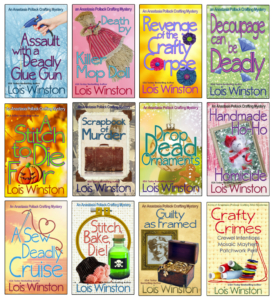 USA Today and Amazon bestselling and award-winning author Lois Winston writes mystery, romance, romantic suspense, chick lit, women’s fiction, children’s chapter books, and nonfiction under her own name and her Emma Carlyle pen name. Kirkus Reviews dubbed her critically acclaimed
USA Today and Amazon bestselling and award-winning author Lois Winston writes mystery, romance, romantic suspense, chick lit, women’s fiction, children’s chapter books, and nonfiction under her own name and her Emma Carlyle pen name. Kirkus Reviews dubbed her critically acclaimed